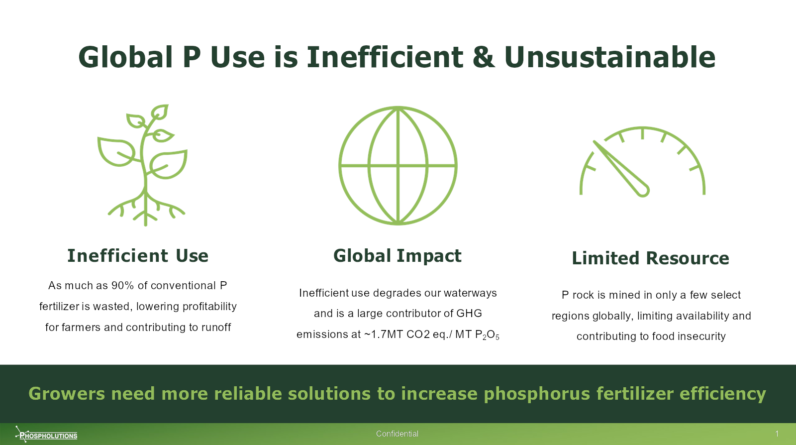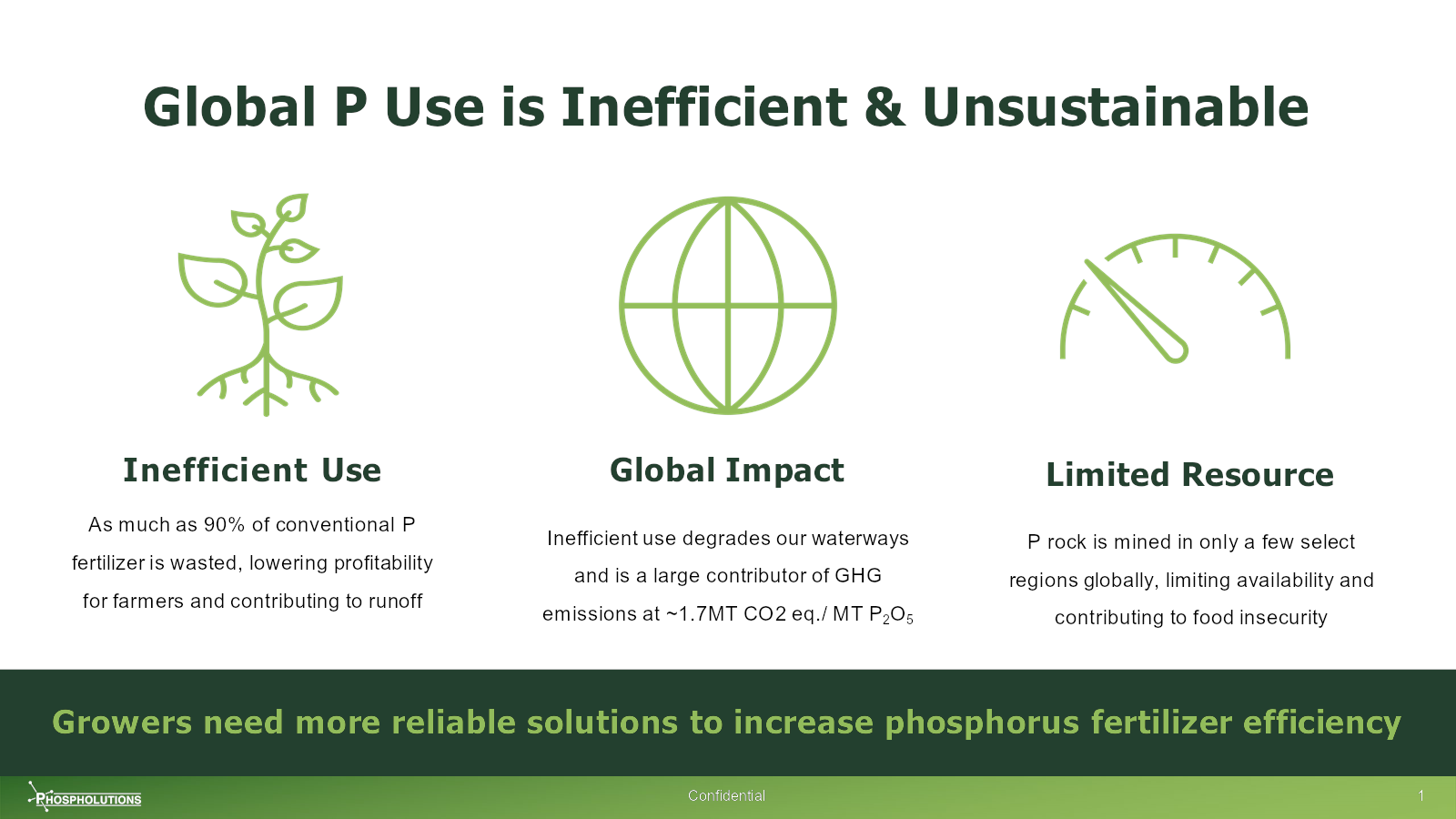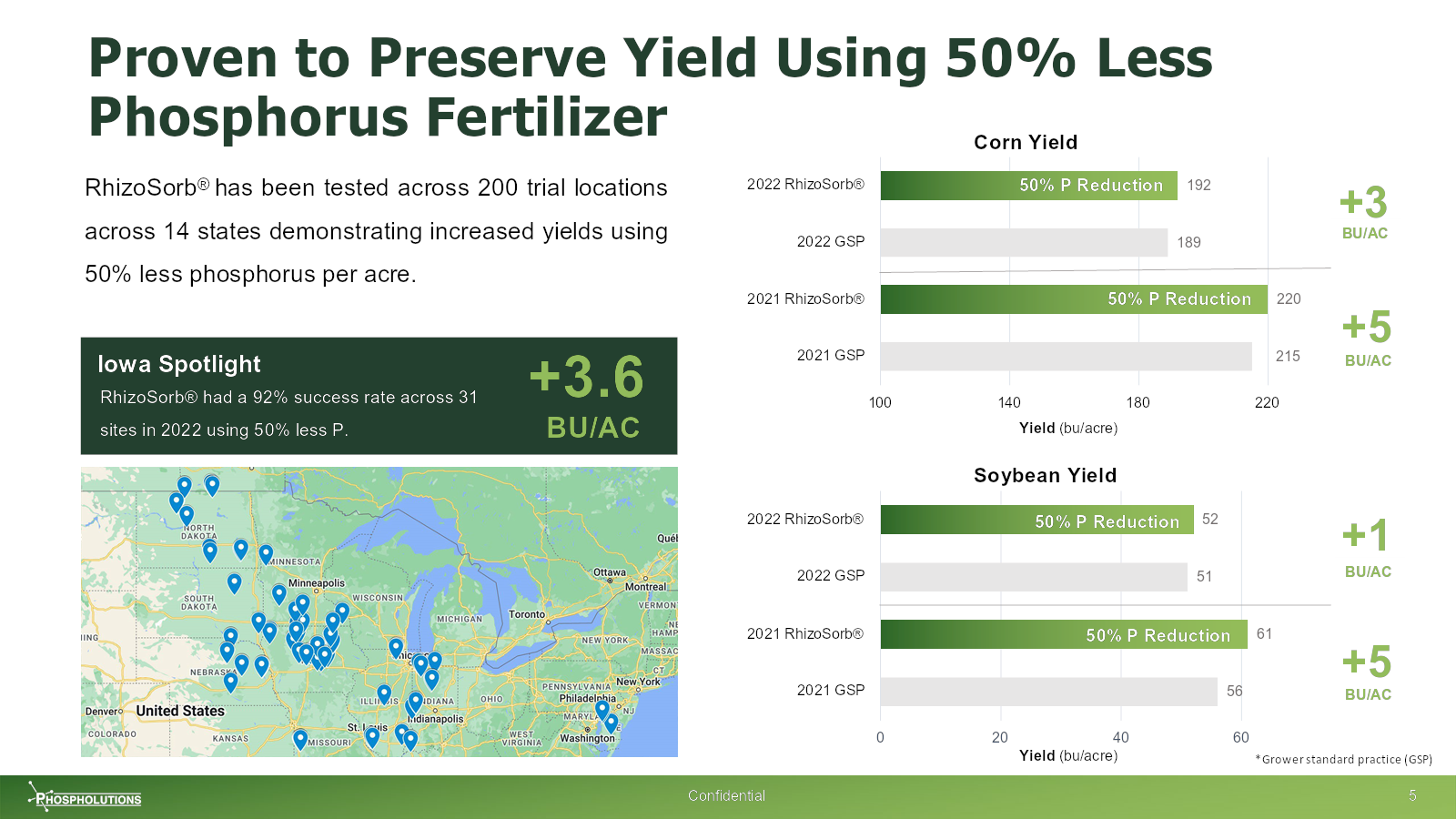
[ad_1]
I haven’t seen a lot of agriculture tech startups submit their pitch decks for this series, so I was delighted to get one from Phospholutions, which just closed a $10 million round, bringing its total funds raised to $32 million.
The team initially said they used the deck to raise a Series B round, which confused me, but upon reading the press information more carefully, it seems they made a mistake. I would usually let people get away with this kind of stuff, but this deck is riddled with issues that could have been avoided by simply paying more attention to detail.
We’re looking for more unique pitch decks to tear down, so if you want to submit your own, here’s how you can do that.
Slides in this deck
Parts of Phospholutions’ deck are pretty heavily redacted, which makes it hard to get the full picture, but there’s still plenty to get into.
- Cover slide
- Problem slide
- Market context slide
- Commercial opportunity slide
- Solution slide
- Benefits slide
- Product slide
- Sustainability benefits slide
- Competition slide
- Value proposition slide
- Competitive price comparison slide
- Margins slide (redacted)
- Go-to-market slide
- Funding history slide
- Short-term objectives slide (redacted)
- 5-year forecast (redacted)
- Series B use of proceeds (redacted)
- Team slide
- Current investors slide
- Summary slide
- Closing slide
Three things to love
Phospholutions’ pitch deck is a captivating showcase of innovation and strategic insight, embodying the essence of an effective pitch. It is a harmonious blend of compelling storytelling, clear value propositions and persuasive data points that together create a compelling narrative.
To P or not to P

[Side 2] Clarity right out the gate. Image Credits: Phospholutions
I love how the title gets right to the heart of things. “Global P Use is Inefficient & Unsustainable” is all we had to say, really.
Investors who are familiar with ag tech probably know this well — the market has a few incumbents that have done well over the years, and if Phospholutions has an innovative take on this problem, it’ll be an obvious investment to say yes to.
I like the simplicity of the graphics. I like that the company hints at the impact of the problems (“lowering profitability for farmers” and “inefficient use degrades our waterways”) in addition to mentioning the problems themselves. All very good storytelling points.
The bottom line, “Growers need more reliable solutions . . .” suggests a solution-oriented approach and communicates what needs to be done. Given that this is a pitch deck, it’s obvious what’s about to happen next.
There’s quite a bit of info on this slide, but I like how each point leads logically to the next, creating a narrative flow that helps lead the eye and prompts the reader to stay engaged. It’s also scannable, so you can quickly absorb the content, too. Very clever.
A couple of small quibbles: I know that P stands for phosphorus, but the writer in me keeps stumbling over abbreviations that aren’t explained. Also there’s no shortage of room on this slide, so while of course GHG stands for greenhouse gases, you can afford to spell it out. And “~1.7MT CO2 eq / MT P2O5” is a lot of alphabet soup to throw on an early slide.
I’ll get off my soapbox now, but attention to detail matters!
Contextualizing the near and medium term
I rarely see startups do this, which is a shame, because it helps build narratives very well:

[Slide 3] “What happens if we don’t address this problem.” Image Credits: Phospholutions
The market opportunity slide continues where the problem slide leaves off. Again, there’s a lot of text here, but it works. The main points are made with graphics, and things are further broken down and backed by claims with just a little hint of crisis.
Segmenting the content into the “Today,” “Short Term,” and “Long Term” buckets lets the reader understand how the market dynamics will change over time. It’s good storytelling, but it also does something more important: It suggests that the founders have an eye on the future and are skating toward where the puck is going rather than where it is. Investors like to see founders who have an eye on the future.
The other storytelling win here is that while it is not explicit in this slide, it sets the stage for taking action: Action that Phospholutions is positioned to provide, of course.
Real impact
The deck spends a bit too much time on the product, in my opinion. But the flip side is that it gets a lot of things extremely right. This slide, in particular, does a lot of the heavy lifting:

[Slide 7] Backed by data. Yummy. Image Credits: Phospholutions
Phospholutions’ RhizoSorb is more expensive than the alternatives and the deck addresses that in two ways: by showing that the product is more effective, and therefore, you have to use less to get superior yields. The deck spends a lot of time on this point. I’m assuming that’s the result of the team getting a lot of pushback on the pricing.
The thing I like about this set of slides, however, is that it really goes deep into the proven efficacy. If an investor asks for more information, there is a lot of it.
In the rest of this teardown, we’ll take a look at three things Phospholutions could have improved or done differently, along with its full pitch deck!
[ad_2]
Source link






